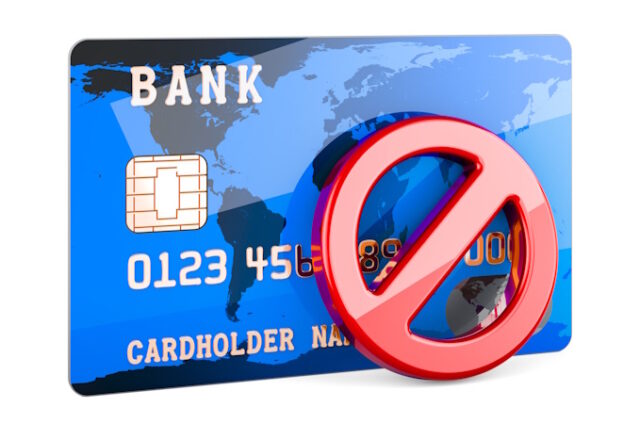
By: – 4 minute read
It’s not just you: Getting a loan is significantly harder now than it used to be.
Over the 12 months ending in June, 21.8% of people who applied for credit were rejected, according to data released this week by the Federal Reserve Bank of New York.
In other words, more than 1 in 5 people who submitted an application for a credit card, mortgage, auto loan or another type of credit were turned down. That’s the highest rejection rate in five years, according to the NY Fed.
Just four months ago, the rejection rate was 17.3%. The NY Fed said the increase in rejections was true across all age groups but more pronounced for potential borrowers with credit scores less than 680 (typically at the bottom of the range lenders consider “good”).
Compared to the NY Fed’s February report, rejection rates increased across every category for the 12 months that ended in June.
- Auto loans: 14.2% (an increase of 5.1 percentage points)
- Credit cards: 21.5% (an increase of 2.8 percentage points)
- Credit card limit increases: 30.7% (an increase of 0.9 percentage points)
- Mortgages: 13.2% (an increase of 3.2 percentage points)
- Mortgage refinance: 20.8% (an increase of 4.5 percentage points)
The new data reflect conditions that experts often describe as a “credit crunch,” which happens when loans become harder to access and more expensive due to economic factors.
The Federal Reserve has been raising interest rates consistently over the past year in an attempt to rein in inflation, which peaked last summer. Higher interest rates make it more expensive for banks to borrow money from each other (and those costs get passed on to consumers, too).
At the same time, after the failures of Silicon Valley Bank and Signature Bank in March, financial institutions have become worried about having enough cash on hand to handle an unexpected rush of withdrawals.
With less cash available for loans — and decreased appetite for risk — banks often get pickier when it comes to giving out credit. They might require borrowers to have higher credit scores or require them to accept a higher interest rate on a loan, for example, or they might decrease borrowing limits on credit cards.
Back in April, survey data from the Fed showed that this process was already underway. About a quarter of banks said they were less willing to offer consumer installment loans (like auto loans) compared to the beginning of the year, and nearly a third of banks said their standards for approving credit card applications had tightened.
Disclaimer
The information contained in South Florida Reporter is for general information purposes only.
The South Florida Reporter assumes no responsibility for errors or omissions in the contents of the Service.
In no event shall the South Florida Reporter be liable for any special, direct, indirect, consequential, or incidental damages or any damages whatsoever, whether in an action of contract, negligence or other tort, arising out of or in connection with the use of the Service or the contents of the Service. The Company reserves the right to make additions, deletions, or modifications to the contents of the Service at any time without prior notice.
The Company does not warrant that the Service is free of viruses or other harmful components
This article originally appeared here and was republished with permission.












